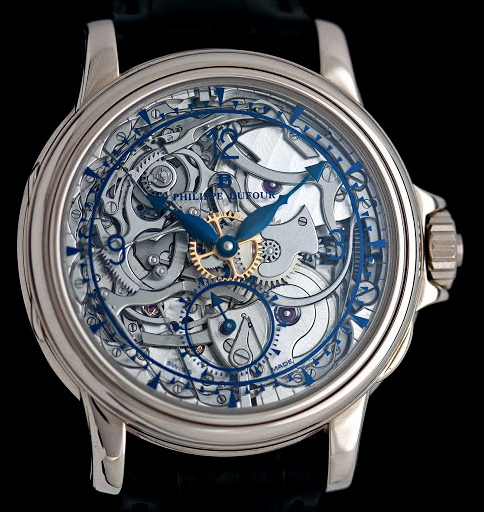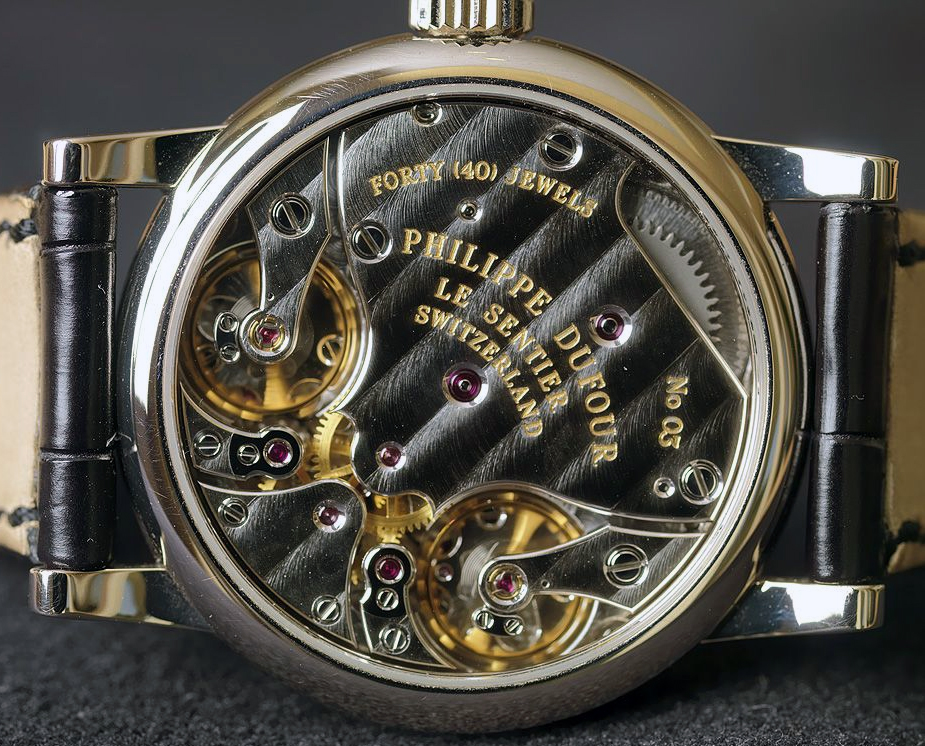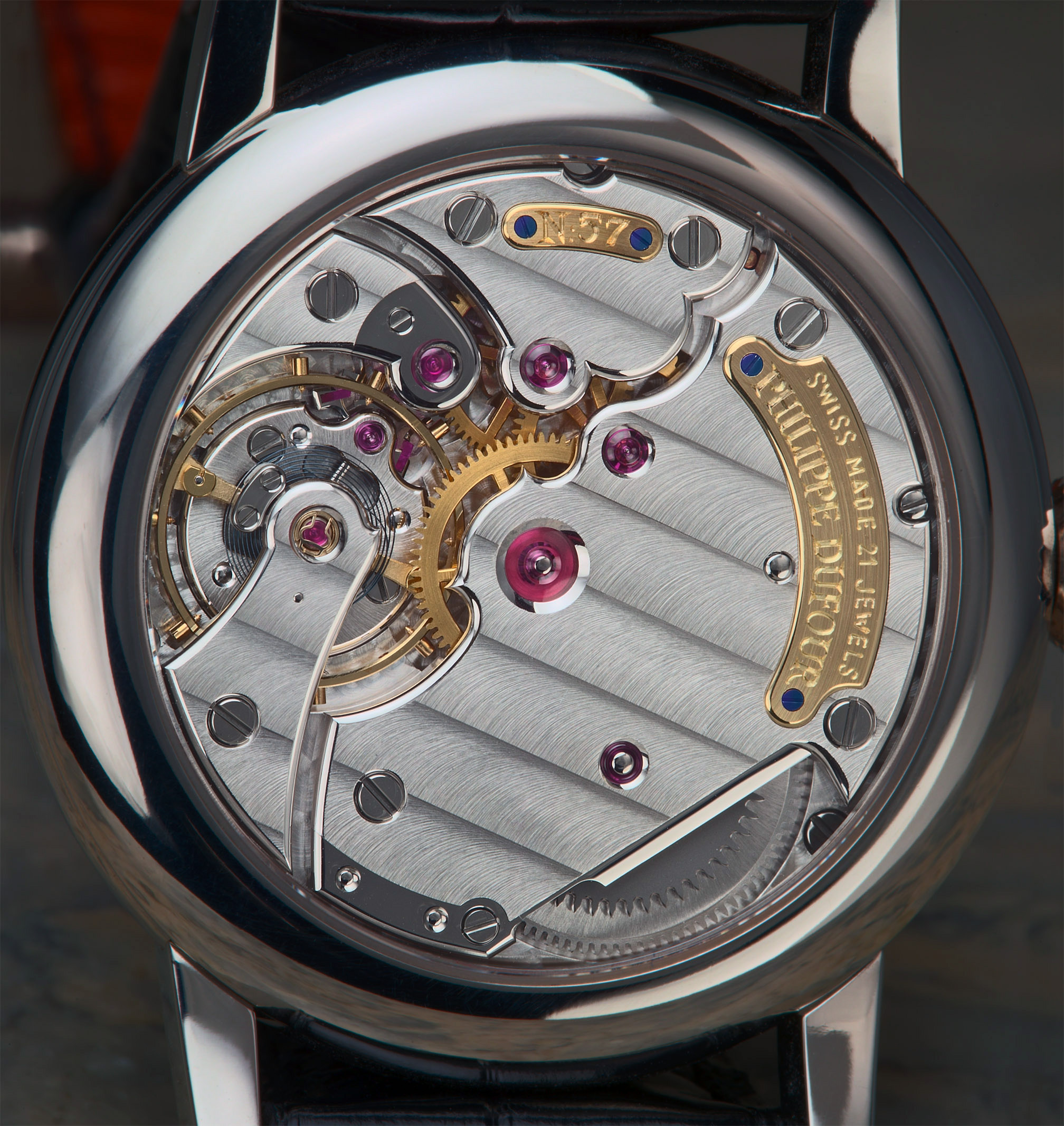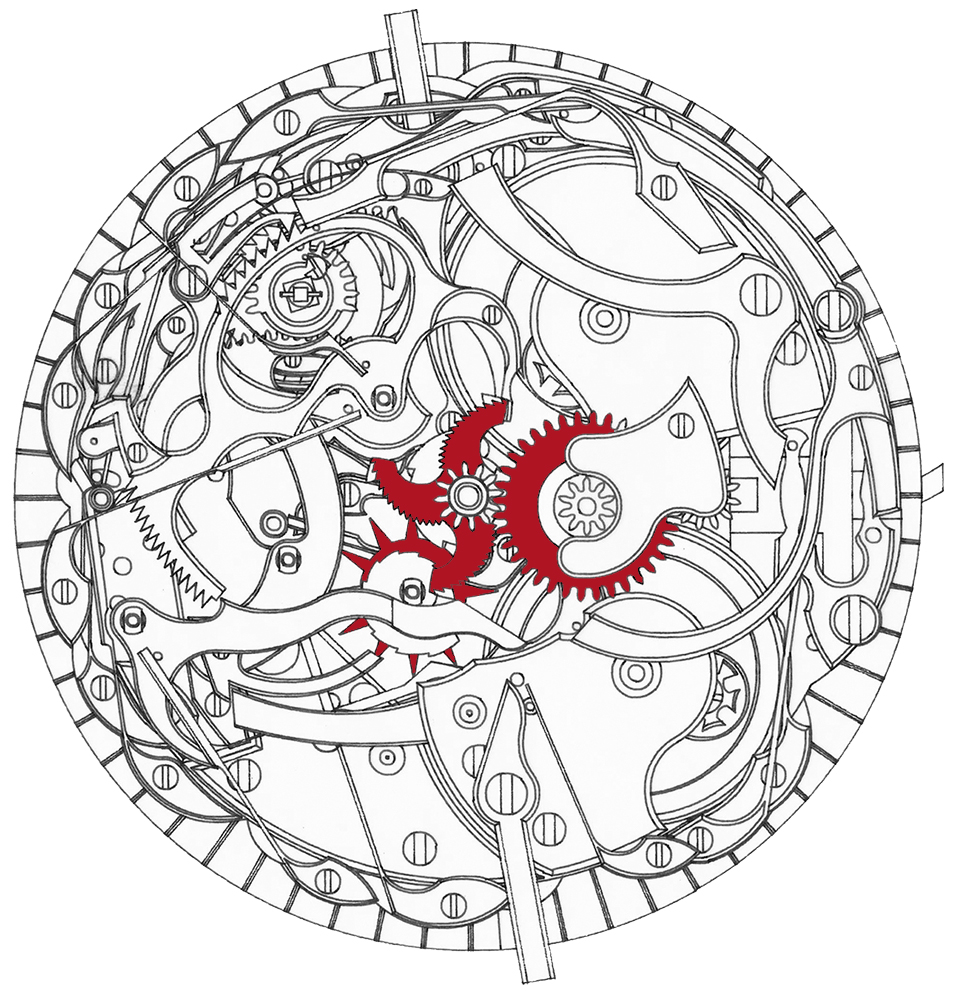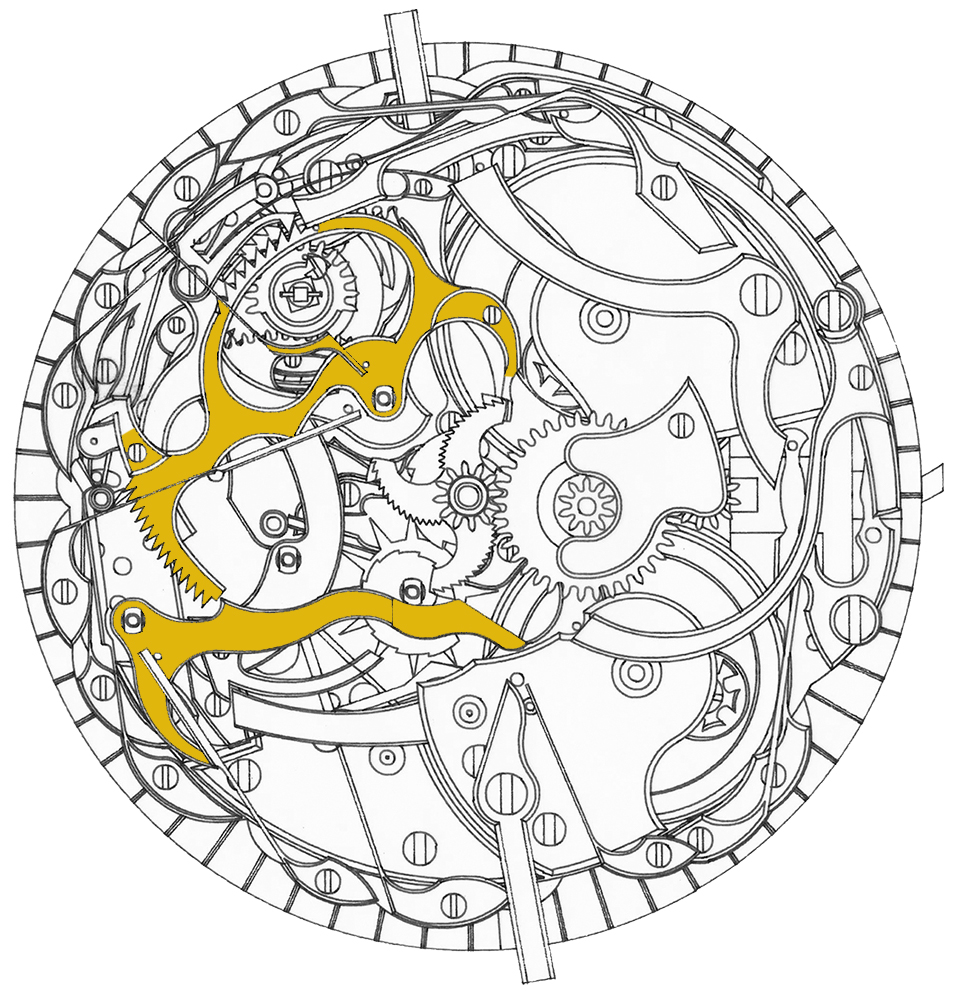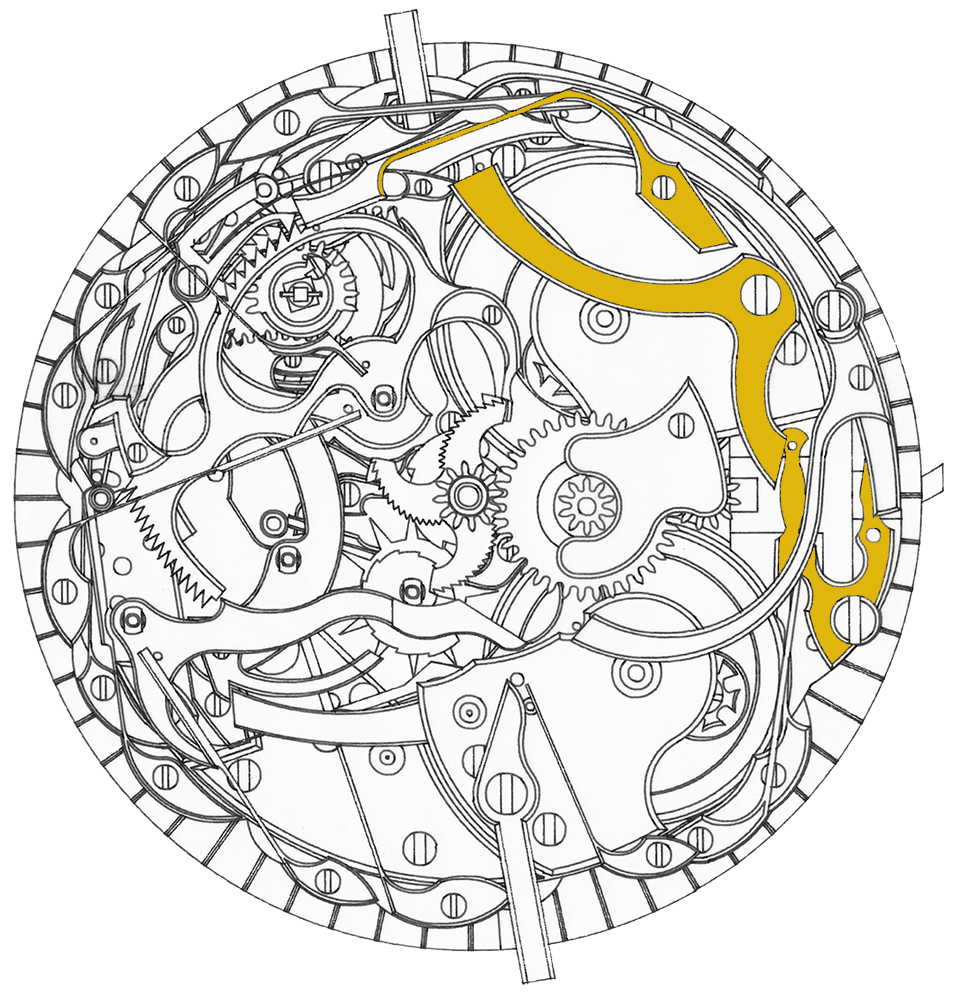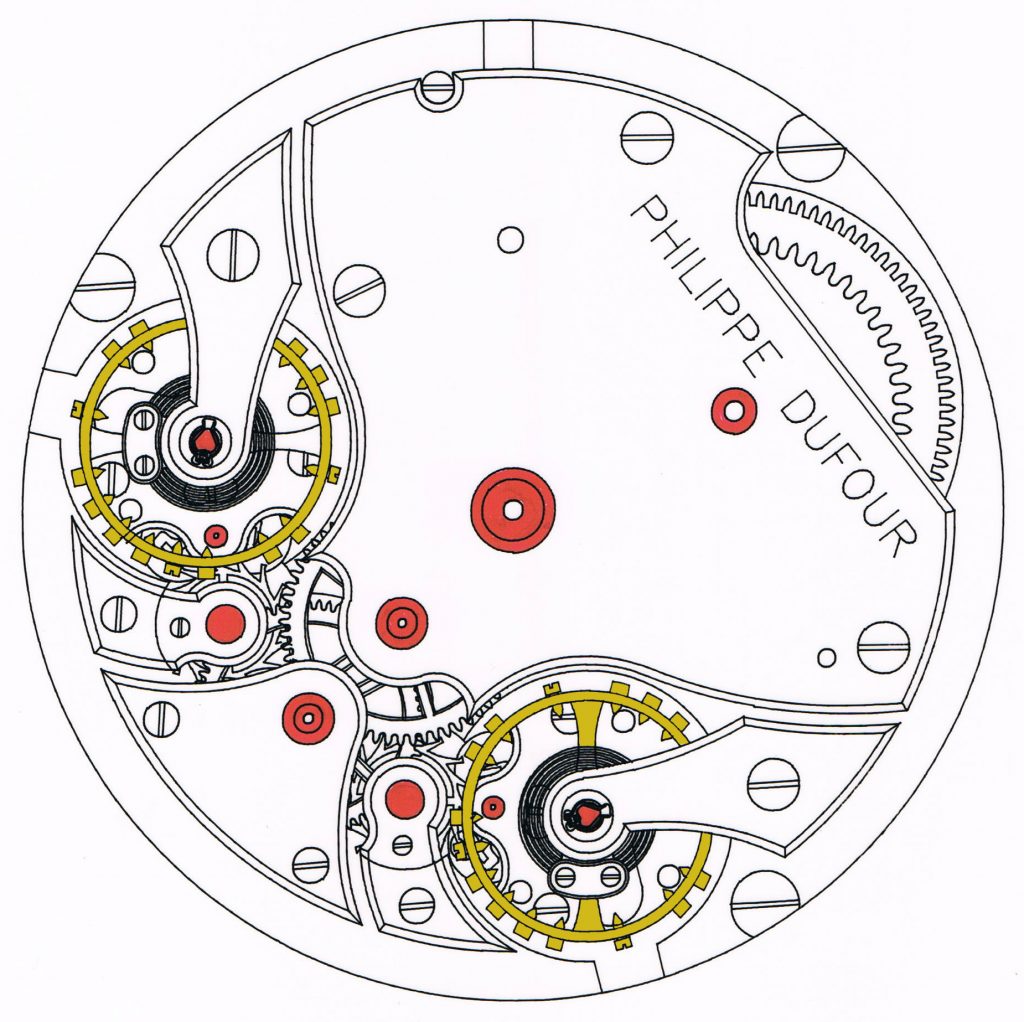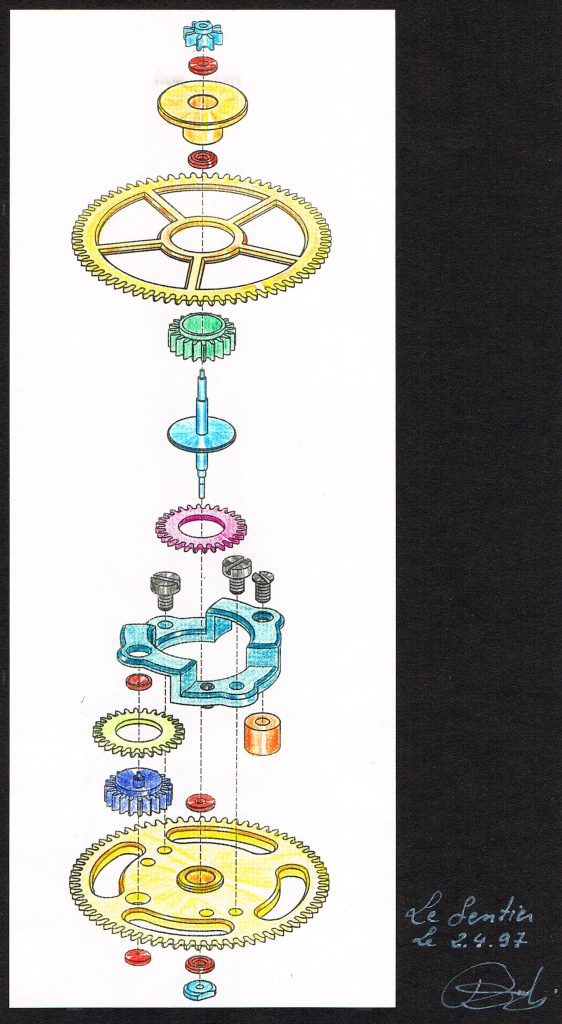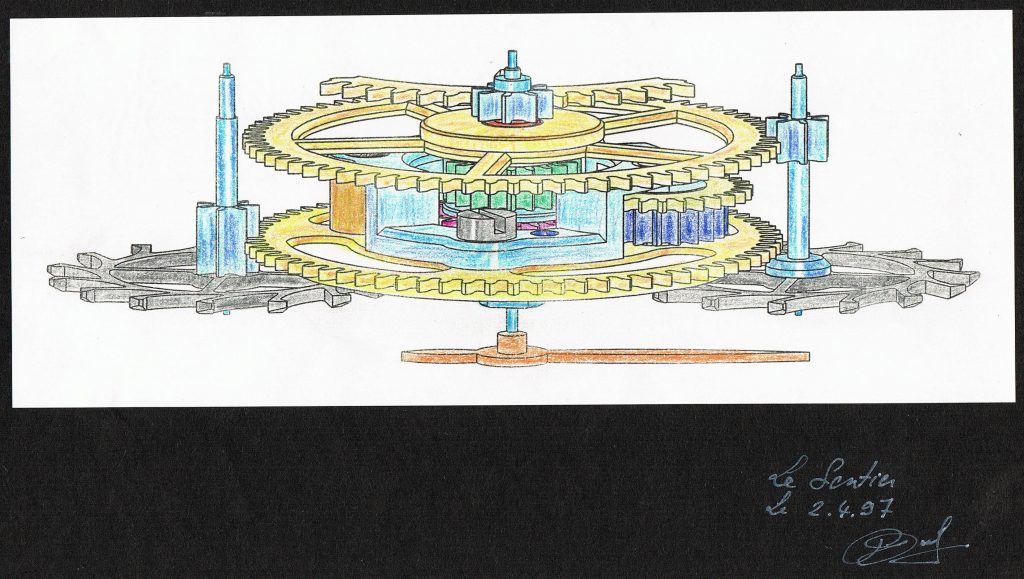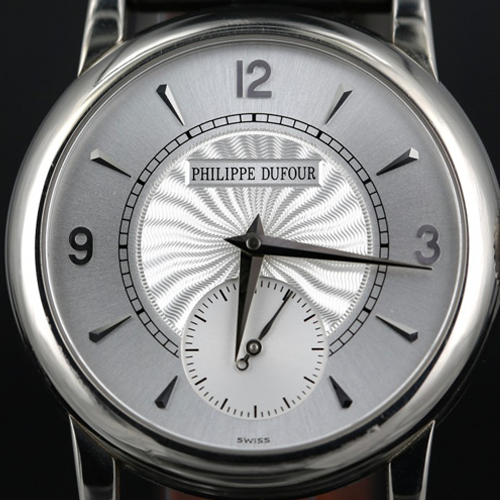My Creations

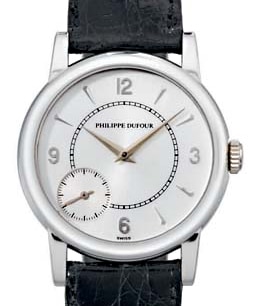
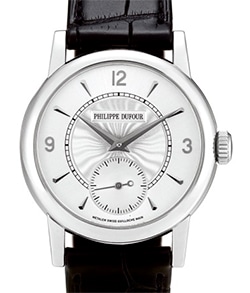
Grande and Petite Sonnerie Wristwatch, Minute Repeater
Zoom
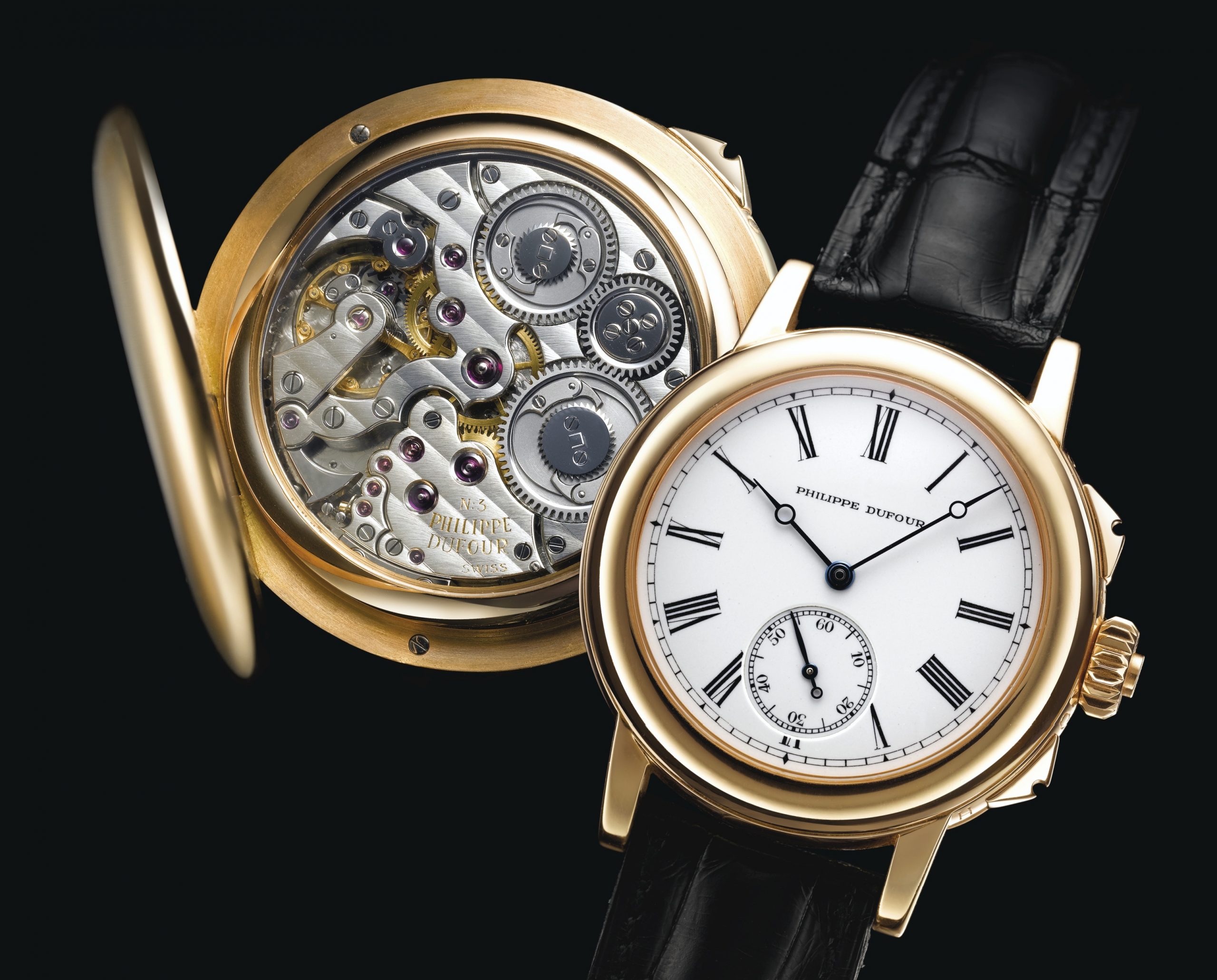
History of the Grande Sonnerie
In the 1980s, for about five years, I restored mainly complicated pocket watches for collectors and large auction houses. So, during this period, I learned a lot about complicated watchmaking. I realized that out of ten watches I restored, seven had their origin in the Vallée de Joux. The Vallée de Joux was a specialist in the manufacture of watch blanks, or blancs as they are called. They were then sold in Geneva, even in England or Germany. Then the suppliers finished them, signed them and sold them under their name.
All this motivated me. I said to myself that if the elders had done it, why not do it again. And with old tools dating from 1900 that I had bought in Le Brassus, a village in the Valley, I tried to understand how they worked at the time. I finally made with this tooling the first 19-line Grande Sonnerie (this is equivalent to 42.94 mm /1 line =2.2558 mm rounded to 2.26). It is a pocket caliber, and I was inspired by what was done at the time, like the Grandes Sonneries made in Le Brassus by the Reymond brothers. It is mainly in alternation with my restoration work that I made these watches. I could not say how long it took me. The idea was to market it.
But at the time, I couldn't afford to invest in a gold box, so I finally inserted the movement in a brass circle and went prospecting in Geneva, Zurich, Lucerne, in specialized stores, at collectors. Everywhere I went, people tapped me on the shoulder and told me that it was good and that I should continue, but nobody trusted me. Very often, I was advised to propose my work to a brand. So finally, I proposed this watch to Audemars-Piguet, and they showed an interest in my work: 5 watches were ordered by this brand. So, you may think that 5 watches are not much! But in terms of work, it represents a lot since it took me about 2000 hours of hard work to make one, so it was a lot of work. That's how I started making watches for others. The watches, I would deliver them completely finished. I had to find a case maker who produced beautiful pocket watch cases and an enamel dial maker.
And from then on, I had a lot of disappointments. My work had not been respected. Out of 5 watches, 2 were broken. My watches were treated like potatoes. The first watch, a Grande Sonnerie (a pocket watch), which had been exhibited in Basel, came back a few months later from an exhibition in Paris, in a plastic bag with some other watches. They clashed during the whole trip. The result? Completely scratched case, broken glasses, broken hands, broken enamel dial. I redid the job a second time and charged everything. Unfortunately, it was not the same. But what happened to the second one is even worse. This watch was at the Swiss market in Morges, and it had to go to an exhibition in Geneva. How do you transport a watch like that? You put the case in a cupboard, and you put the watch in your jacket pocket with your lighter, your phone and your keys. You go to your car and jam your jacket in the car door. The person who did this worked until he retired, and nobody ever told him anything. And I think for this watch, you can use the term "smashed". That is, it had no crystal, the hands were broken, the enamel dial was cracked, the bottom of the case was completely sunken which caused the bowl underneath to be deformed and finally shattered the crystal underneath. The movement was stained with glass bricks. I immediately signed a paper saying that I was completely discharging the watch and told them I didn't want to see them anymore. That day was the end for me. I told myself that I would never work for others again. I finished the other three pocket watches I owed them and prepared to start over.
After recovering from all these emotions, I told myself that I had to try again, but this time, to start with the idea of a bracelet watch. I looked at the market. It was in the years 1989. I saw that there was the beginning of tourbillions, chronos, and I said to myself: what if I made a chrono? But if I went that way, it would be just one more. So, I said to myself that I had to do something that had never been done before. The Grande Sonnerie Répétition Minutes had never been made into a wristwatch. And my idea was set, I had to do it. Thanks to the help of an Italian collector, a man named Fumi, who had been urging me to do something together for a few years already. So, one day, I asked him if he was ready to take the risk with me. And he said yes! So, we decided to start building the Grande Sonnerie Répétition Minutes wristwatch. I had to learn the computer, the computer-aided design system, AUTOCAD, which I learned by myself. It took me roughly two and a half years to build and produce the first watch, N°1, which I exhibited in Basel in 1992. It was a big surprise because nobody expected it. On that occasion, I received a prize awarded by the Grimoldi Jewelers of Milan for the most technical realization. After Basel, since it was the first time I exhibited, I did not sell anything. The only interest was that some watch brands asked me to do some for them. But in this field, I had already given.
Once the Basel fair was over, I found myself in big trouble. I was, as one might say, "on my knees, with my head under the water". I came into conflict with the person who had helped me, who had not understood that it takes time to get things right and that before having the Porsche and the cigar, the watch had to be made and sold. So, I had to put this first Grande Sonnerie bracelet and all that concerned it (plans, work, etc...) in a safe until we found a solution after many discussions through our lawyers. Solution that we found. I was going to be confronted to have to sell the Big Ring N°1 in order to be able to refund the person who had helped me. Great discovery for me of the commercial side of things that I absolutely did not know. I went to prospect and present the watch in the United States at first, and then to Singapore where I spent ten days negotiating and where I was taught for the rest of my life. I made monumental mistakes. In discussions, on several occasions, I made them lose face. They would ask me what the discount was on the watch, and I would get mad, slamming my hand on the table and yelling, "THERE IS NO DISCOUNT, THIS IS THE ONLY WATCH IN THE WORLD!?!". But that didn't stop them from picking me up in the evening to go for a drink because business doesn't mix with the rest. It was very difficult, but it was a great discovery for me. I sold this watch and I had three others on order behind it, as well as a pocket watch which was numbered N°1, and which is the only one now. Who knows, maybe I'll make another one? These are the beginnings of the marketing of my watches.
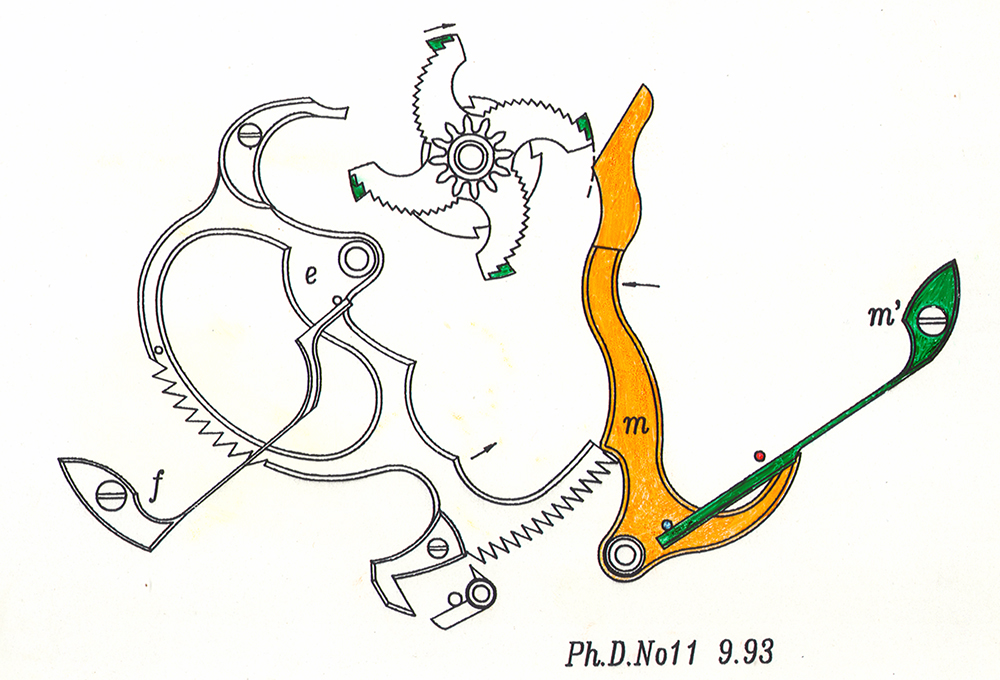
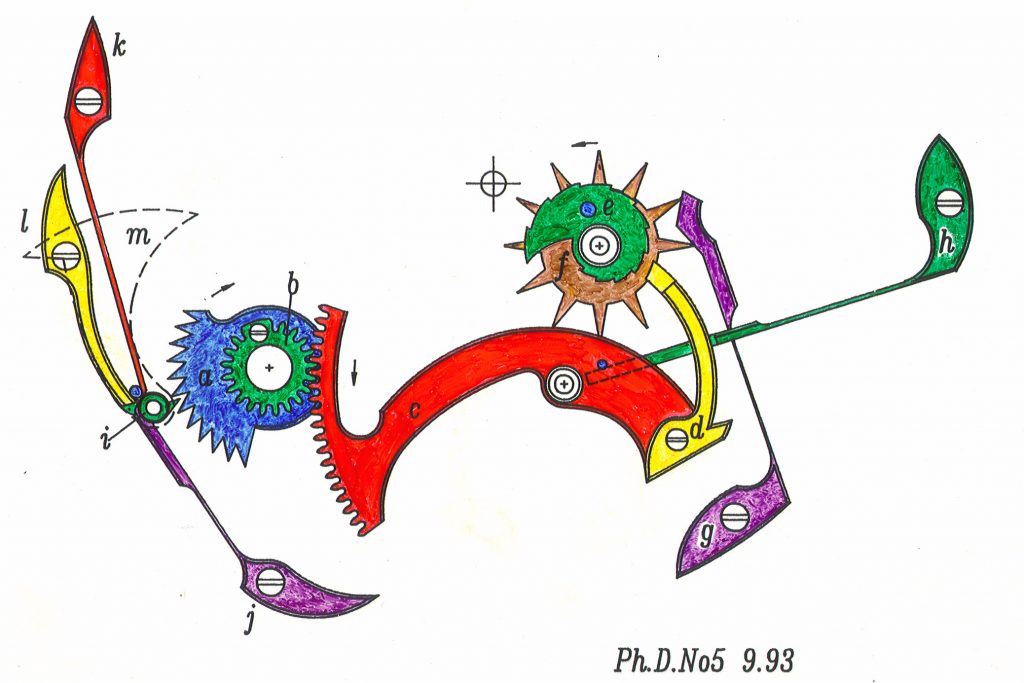

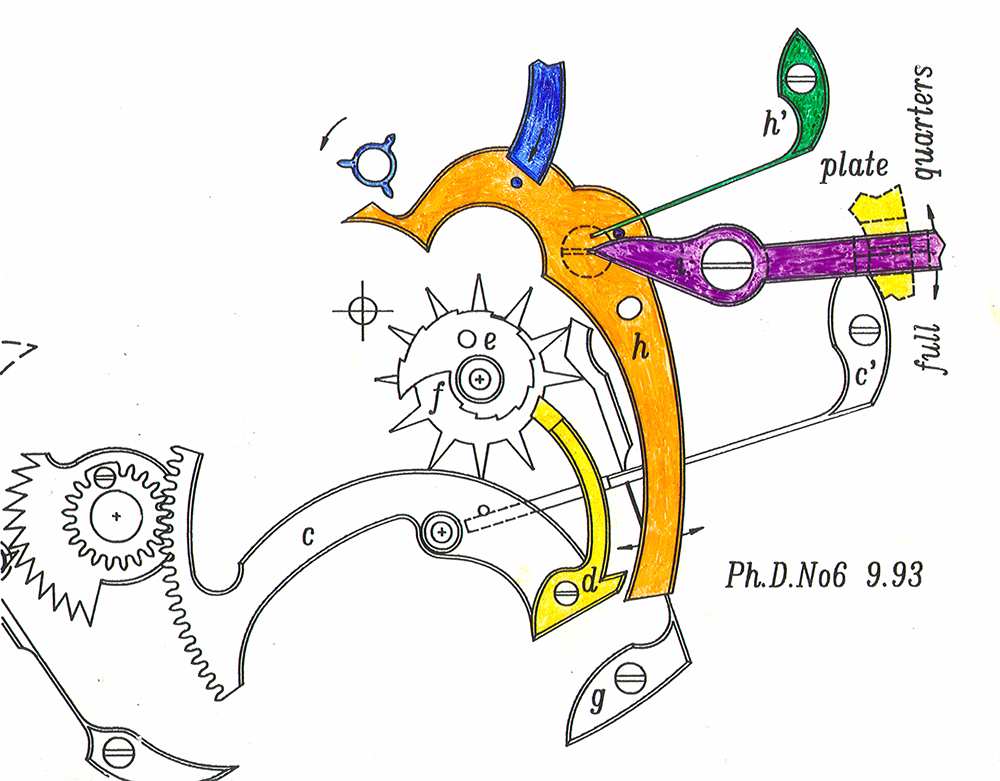
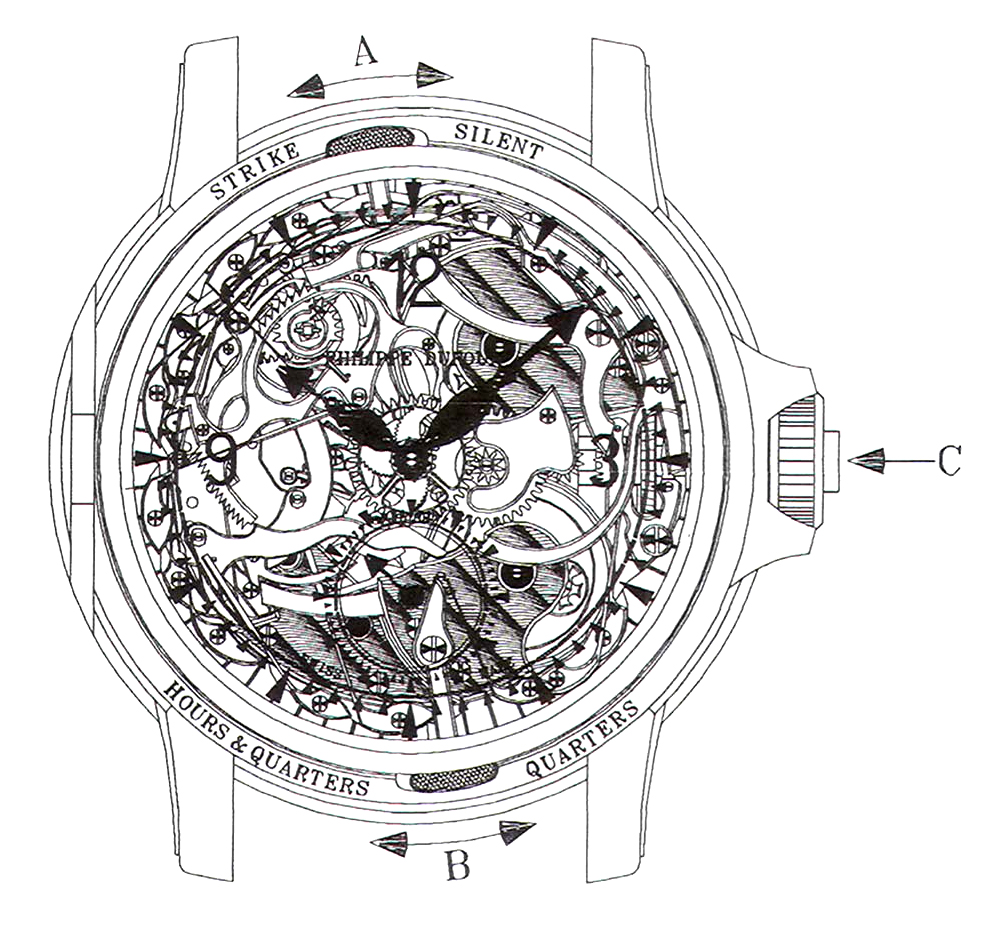
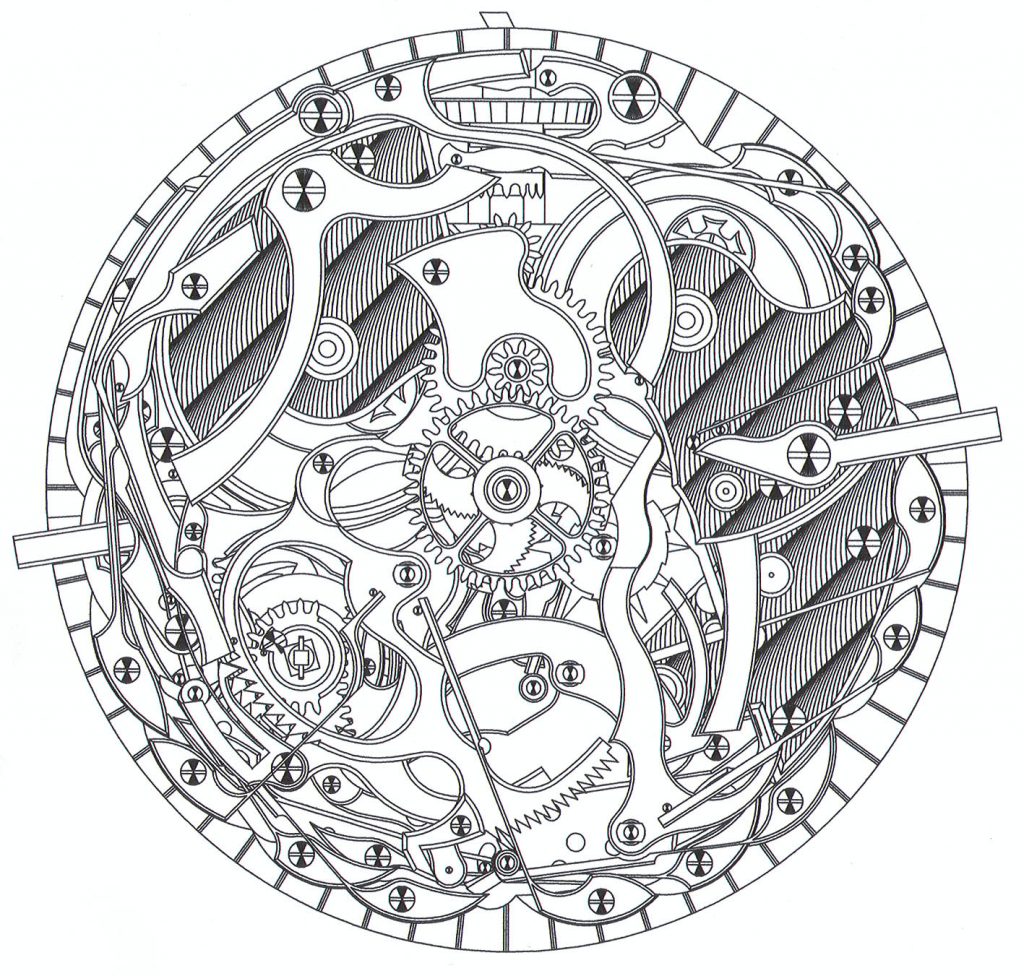
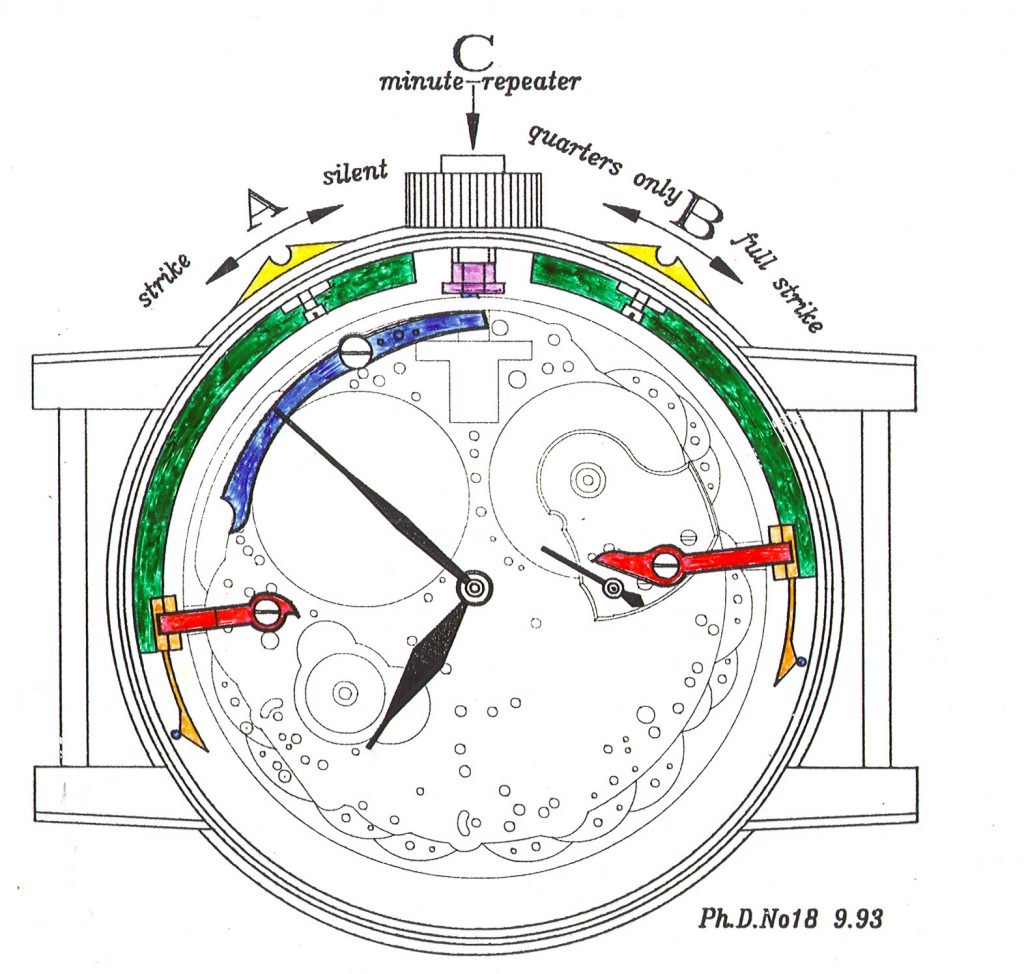
Spécifications
Diameter
Thickness
Power reserve strike
Power reserve time
Escapement
Balance wheel
Vibration
Number of jewels
Striking modes
: 32,5 mm
: 7 mm
: 24 hours
: 38 hours
: A ancre
: A masselottes, spiral à courbe terminale Breguet
21'600 / hour
: 35
: Silence, grande et petite sonnerie, minute repeater
Diameter
Thickness
A définir
Répétition minutes
Matière
Glaces
Cadran
: 41 mm
: 12 mm
: Avec lunette à charnières protégeant leviers de programmation grande sonnerie
: Déclenchement répétition minute par pression sur le poussoir de la couronne de remontoir
: Or 18 carats rose ou gris
: 2 en saphir
: En saphir
Boucle
Buckle of the strap
: En or 18 carats avec logo
: Design et systèmes originaux
1st Little Anecdote
2nd Little Anecdote
It was at the Basel Salon, which was brand new for me, where I started to exhibit my first Grande Sonnerie Répétition Minutes bracelet. The independents watchmakers were not necessarily recognized compared to the big brands. We were put at the back, near the toilets. I didn't have a watchmaking showcase but a stand that was certainly made for household art. I had tried to furnish it with trays, coins, elements of the Grande Sonnerie and in the middle, I had my watch, the only one. Some people from England had heard that I was exhibiting something special there, I don't know how, but anyway, they had made an appointment for the first morning of the exhibition at nine o'clock. So that day, I saw two Englishmen arrive at nine o'clock sharp, one a bit gruff and the other a typical well-dressed English gentleman. And the conversation went like this: - Good morning, gentlemen. - Good morning. Where is the watch? I put on my white gloves, then I took the watch out of the window and presented it to them on the tray. I presented it to the gruff gentleman. The guy took it, looked at it, left, right, left and right. They said to me: -How many can you make in a year? I answered them: -I don't know. It all depends on how much interest there is and how I can organize myself. And then they told me: -We buy all your production! I answered them, astonished: - Oh really!?! But you want Philippe Dufour? And they answered: - No, no, the brand is secondary. So, I told them: - See, I'm sorry, but I only sell Philippe Dufour watches. And the person got offended. At that precise moment, he threw my watch on the tray. Fortunately, I was holding it tightly and was able to catch my watch just barely. I think if I wasn't holding the tray, if I didn't have both hands gripped, I would have bumped into him. It was an insult to my work. They left without saying goodbye. On the last day of the show, who is it that I saw coming? The English gentleman who came up to me with a big smile and said with his little English accent: - It's OK. We buy all your production under the Philippe Dufour brand. So, I answered: - HAVE YOU BEEN WATCHING ME!? I WILL NEVER WORK WITH PEOPLE LIKE YOU! I'VE BEEN THROUGH ENOUGH, YOU SEE!
That was my first confrontation with this world, not of crooks but almost, a commercial world where I started to see all the colors.
Grande Sonnerie Gallery
Duality Wristwatch
Zoom
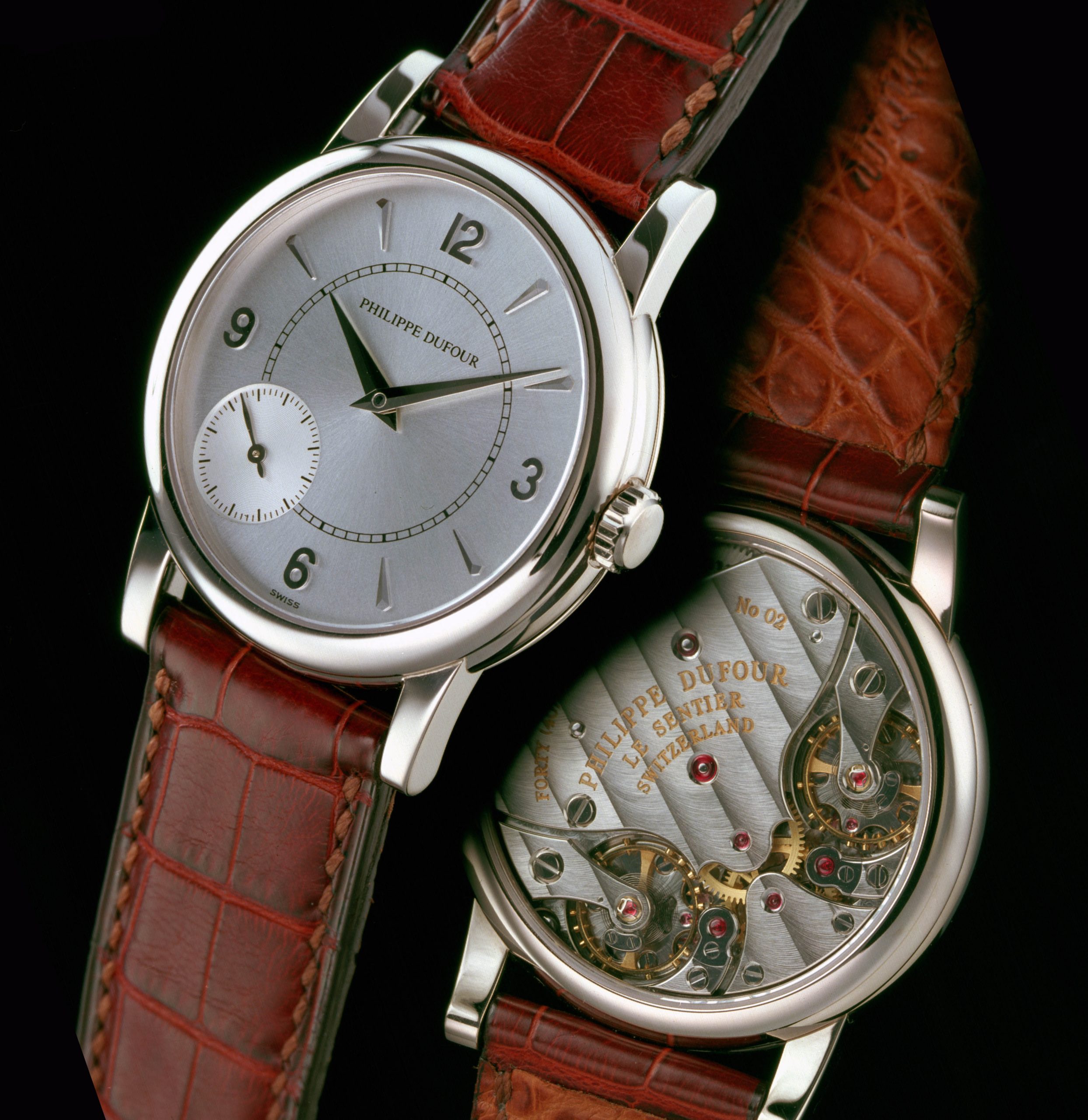
History of the Duality
The Duality was born because of a discovery in a catalog of the "Time Museum" in Rockford, USA, a museum that owns many technical and chronometric pieces. A pocket watch with a double balance wheel system, made in the Vallée de Joux Watchmaking School in the 1930s, was included in this catalog. And because I'm not in favor of a tourbillon in a wristwatch, because you are the tourbillon of your watch, anyway, that's another topic... I thought that this system, would be maybe a way to get around all that.
I tried to figure out how it worked. I built it on the computer using AUTOCAD, and I had to build a draft to understand exactly how it worked, and what effects one balance wheel had in relation to the other. This first prototype was made with existing components, and I had to build the differential system. Thanks to this, I was able to get an overall view of this double regulator. I was able to learn that the two balance wheels compensated each other and that if only one balance wheel was working, the second hand took two minutes to make a revolution. And then, in terms of precision, I took the first balance wheel in a horizontal position, set it to zero and I loaded the second balance wheel so that it would delay a lot. I then checked when only one balance wheel worked, there was a minute of delay and when I made them both work, there was only thirty seconds of delay, so that each error was divided by two if the two balance wheels worked together. That was the principle. And from this prototype, I made the final construction of the movement to be able to house it in a 34 mm wristwatch. And in 1996, the Duality was born. Today I have made nine examples of this watch. A few of them are rarely seen at auctions and can fetch a high price. Now people know about the product, and many collectors want one.
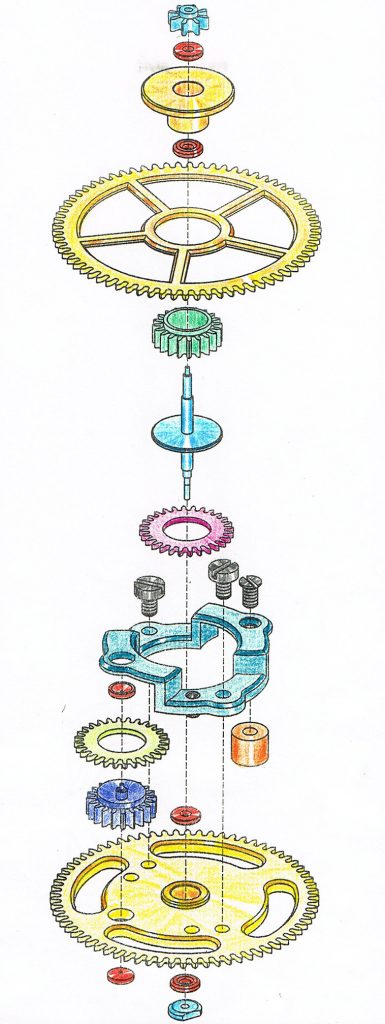
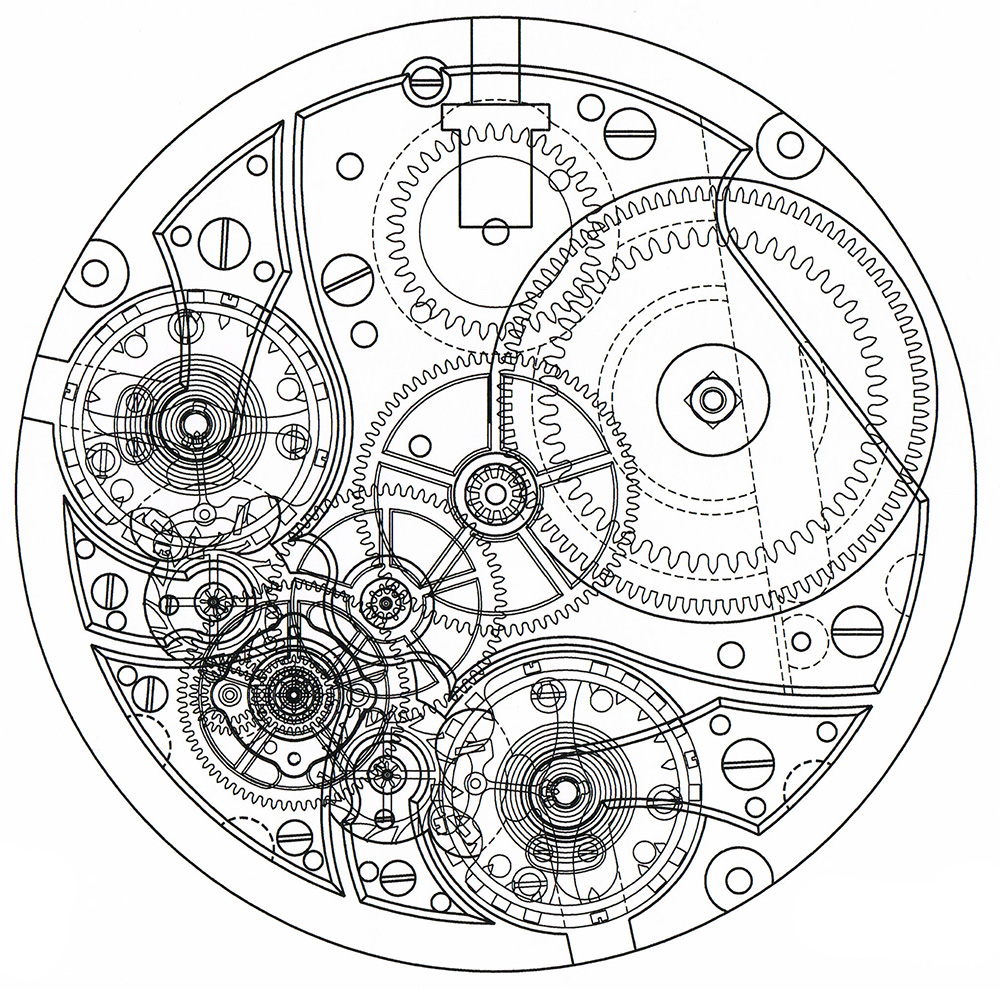
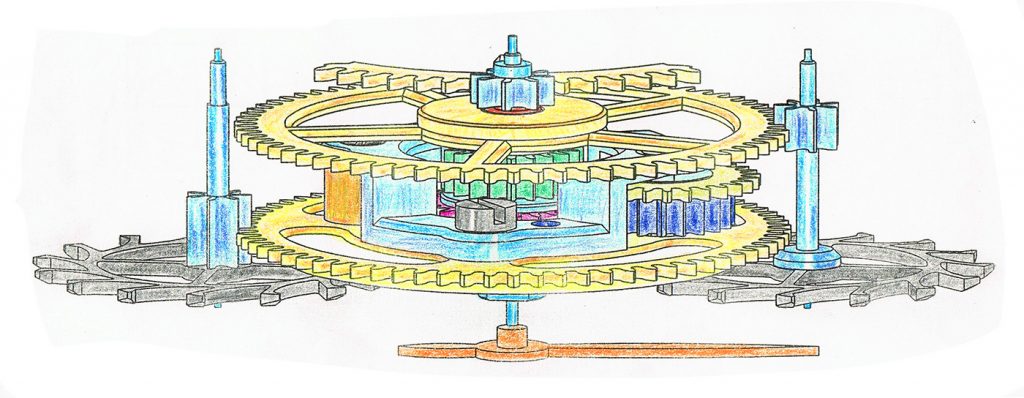
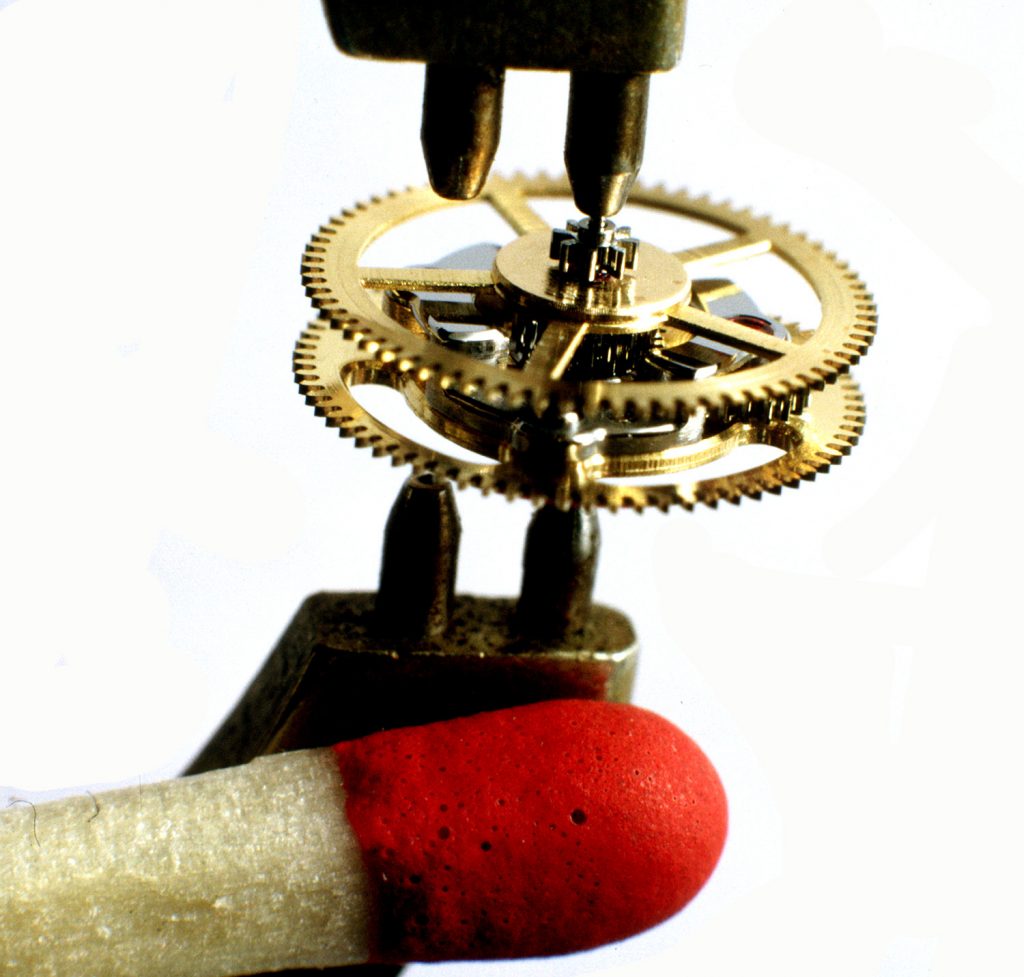

Spécifications
Diameter
Thickness
Réserve de marche
Escapement
Balance wheel
Spiral
Vibration
Number of jewels
: 30 mm
: 4 mm
: 40 heures
: 2 échappements à levier
: 2 balanciers Glucidur avec vis de réglages
: 2 spirals à courbe terminale Breguet
: 18'000 / heure
: 40
Diameter
Thickness
Matière
Glaces
Cadran
: A mettre à jour
: A mettre à jour
: Or 18 carats rose, jaune ou gris / platine sur demande
: 2 en saphir
: A mettre à jour
Boucle
Buckle of the strap
: En or 18 carats avec logo
: A mettre à jour
Duality Gallery
Wristwatch Simplicity
Zoom
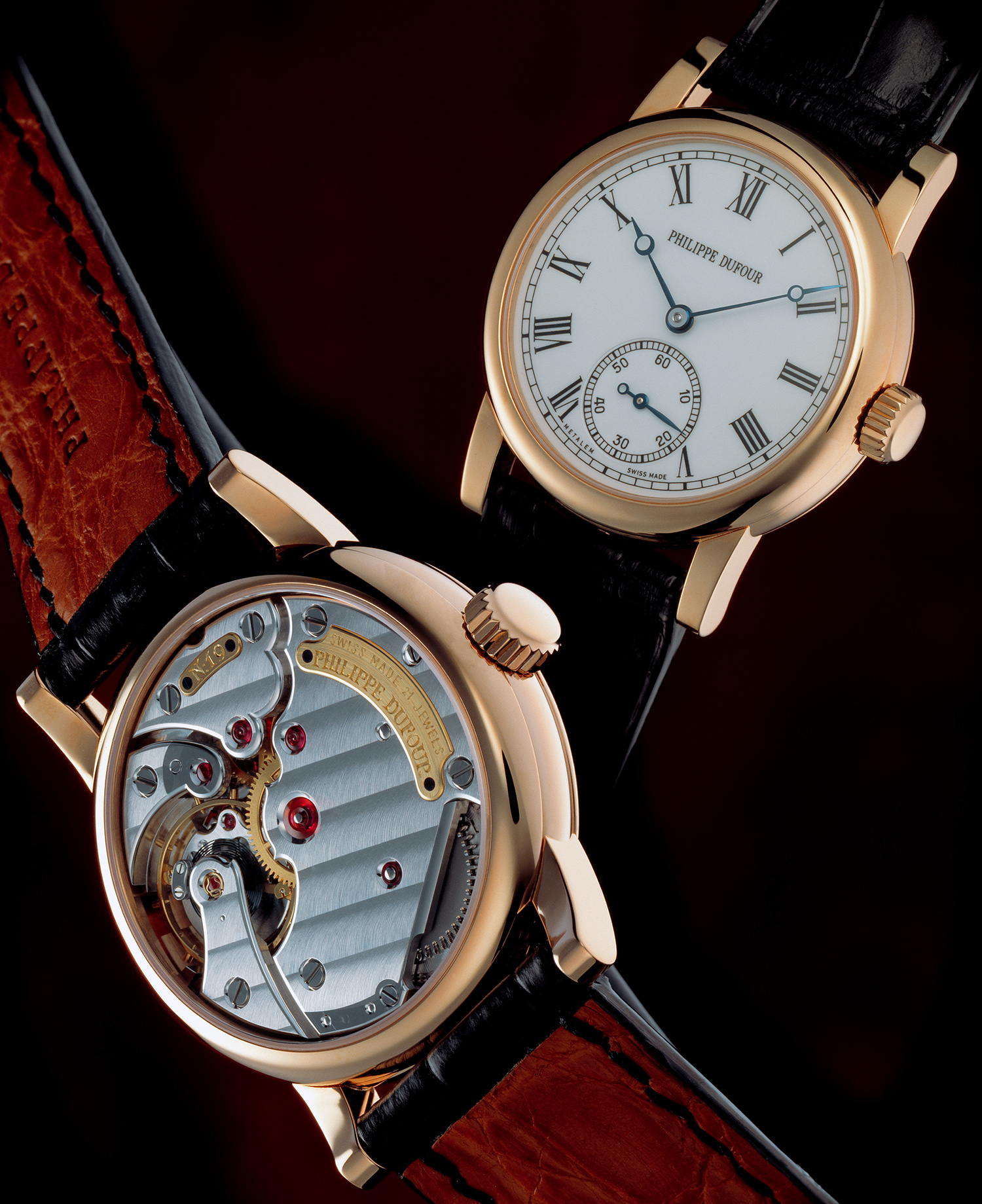
History of the Simplicity
The birth of the Simplicity is due to the remarks and advice of a friend, independent watchmaker, Antoine Presuzio, in Geneva, who at the time, in the 1990s, worked a lot with Japan. One day he said to me: - You should make a watch for the Japanese market. Then I said to him in astonishment: - Really? He answered: - Of course. You know, in Japan, you are very well known. There is even a Dufour fan club in Tokyo. And I answered even more astonished than before: - But listen, I have never sold a watch in Japan, I don't understand. Then he adds: - But you don't realize the knowledge they have; they are passionate about watches. I was very surprised after this conversation. So, I said to myself that I was going to make a watch, but a simple one, hence the name: "Simplicity". So, there were two ways to make it. The first way, the simplest way, was to do it like everybody else. Let me explain. You order the movements engraved with your name on the left, on the right. You send someone else to do the casing, the dial, the hands, and you just write the bills. That was one way to do it, but if I had followed that way, I would have destroyed everything I wanted to build. Then the second way, the most difficult one, was to make this watch myself from scratch, a solution I obviously chose.
So, I started on my computer. And again, I built a movement of about 12 lines (which will be in 34 or 37 mm) inspired by watches that had been made in the 1950s to 1970s that I had restored. I remember that generally the only problems with those watches were dirt and oil changes, but they had almost no wear. The gears, the pivots were well proportioned. I absolutely wanted these proportions to be in the Simplicity. I realize that, over the years, I was right on target because if I receive a watch for service after ten, twelve or even fifteen years, apart from a cleaning and oil change, there is no wear.
So, I started this project. I made one or two first movements, which I exhibited in Basel in the 2000s, including this Simplicity model that I still wear, the N°000, in white gold, 34mm, with a hand-engraved dial. This watch was a success from its first show in Basel. I had a lot of Japanese retailers who came and wanted this watch but there was a problem: they didn't want to work directly with me but wanted to work with a distributor. I told them directly that there was no availability because of the few watches I was making. And it was only on the last day of the Basel show that I met the Shellman company, especially Mr. Isogai, a respectful Japanese man, who told me that he would work directly with me. This is how it all started. Then I went to do one or two exhibitions in Japan, in Tokyo, precisely at Shellman where I could meet the customers. Of the first 200 Simplicity I did, 120 are in Japan.
Today, I am pleased to say that this watch is sought after by all collectors. From time to time some of them appear at auctions and reach completely crazy prices.
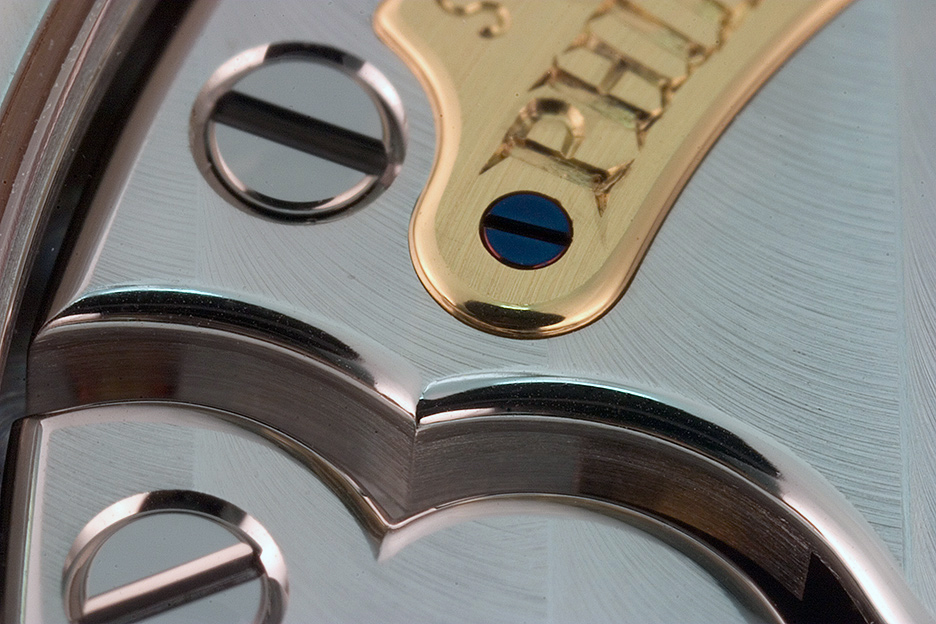
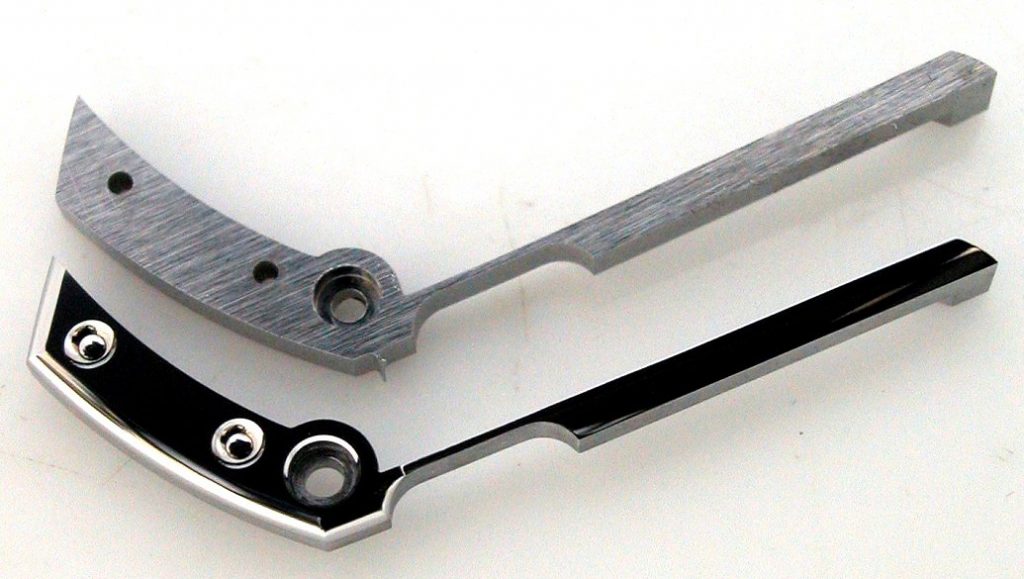

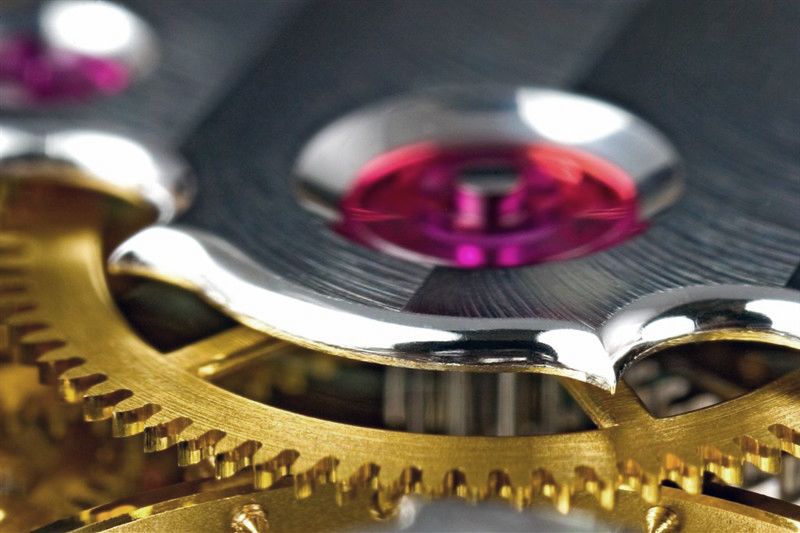



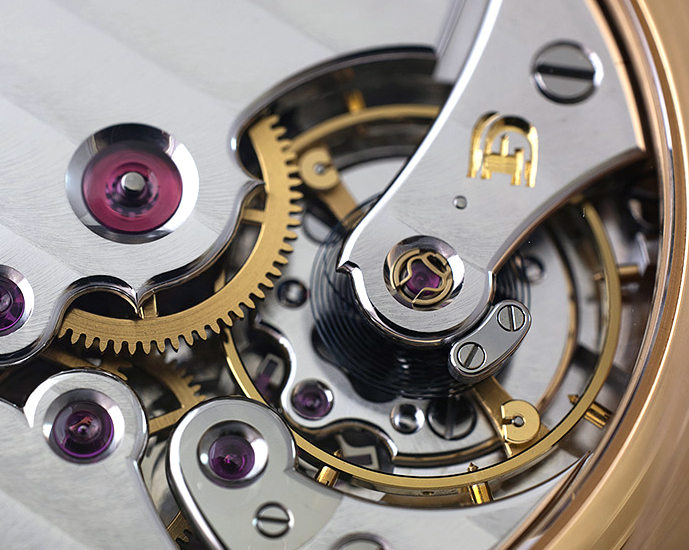
Spécifications
Diameter
Thickness
Réserve de marche
Escapement
Balance wheel
Spiral
Vibration
Number of jewels
: 30 mm
: 4 mm
: 52 heures
: A encre
: balancier Glucidur à vis et masselottes
: A courbe Breguet
: 18'000 / heure
: 21
Diameter
Matière
Glaces
Cadran
: A mettre à jour
: A mettre à jour
: Epaisseur
: Or 18 carats rose ou gris et platine
: 2 en saphir
: En argent, guilloché, index et aiguilles Dauphine en or blanc,
chiffres romains, aiguilles Breguet en acier bleui
Boucle
Buckle of the strap
: En or 18 carats avec logo
: Crocodile
Little anecdote
I'm lucky enough to have been able to meet all the customers who own my watches and I often get positive feedback from people who tell me how they wear their watch, how much fun they have with it, that they like to hear the clicking of the winding, those things. Then I had an experience in Japan the last time I went to show my watches. One of my customers who has a Simplicity came to see me. He explained to me that he was a doctor and that in his medical practice he had all the pictures of my watches, all the magazines; at that time, there were a lot of magazines that came out with articles about the Simplicity and my work. Then he explained to his patients where the watch came from. So, he told me that he has patients at the end of their lives, cancer patients, and he lended them the watch for a while. He told me that they enjoyed a moment of happiness. And with pride, he handed me the pictures of his patients who were wearing the watch and who I think, unfortunately, are no longer there today. He humbly and politely asked me if I would autograph them. I looked at his pictures where you can see that these people had eyes that shone with a wide smile. It was something extraordinary, which touched me, I could not even speak. Of course, I signed the photos. And I said to myself that if, for each watch I make, I have pleasure in making it, and if and that if this watch can give pleasure to people on the other side of the world, then "the circle is complete".

